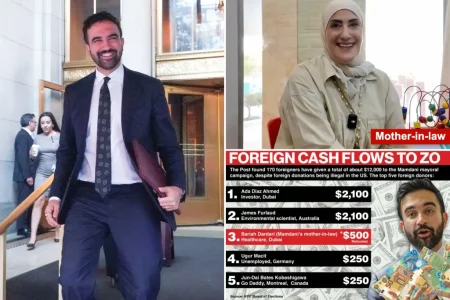The tranquil atmosphere of a bustling city street in Magdeburg, Germany was shattered in an instant as a car careened into a dense crowd, transforming a scene of everyday life into one of chaos and terror. The incident, captured on video, showed the vehicle accelerating into the unsuspecting throng, leaving a trail of injured and panicked individuals in its wake. The sheer unexpectedness and brazen nature of the act sent shockwaves through the community and sparked immediate investigations into the circumstances surrounding this horrific event. Initial reports painted a picture of confusion and fear, with eyewitnesses struggling to comprehend the sudden eruption of violence into what had been a normal day. As emergency services rushed to the scene, the full extent of the devastation began to unfold, revealing a grim tapestry of human suffering.
The immediate aftermath of the incident was marked by a flurry of activity as paramedics, police officers, and firefighters converged on the scene. A desperate scramble ensued to provide medical attention to the injured, whose numbers and conditions remained uncertain in the initial hours. The area was quickly cordoned off, transforming the once-vibrant street into a somber tableau of flashing emergency lights and yellow tape. As news of the incident spread, a sense of disbelief and horror rippled through the city and beyond, leaving citizens grappling with the disturbing reality of such a violent act taking place in their midst. The focus shifted rapidly from managing the immediate crisis to piecing together the events leading up to the tragedy and identifying the individual responsible for this senseless act of violence.
The investigation quickly zeroed in on the driver of the vehicle, identified as a 50-year-old Saudi Arabian citizen residing in Germany. This revelation added another layer of complexity to the already bewildering incident. The man, reportedly a practicing physician, was apprehended at the scene and taken into custody. His motives remained unclear, leaving investigators to delve into his background, personal history, and any potential connections to extremist ideologies or groups. The fact that the perpetrator held a respected profession further intensified the public’s bewilderment, raising questions about the potential psychological or emotional factors that could drive such an individual to commit such a horrific act. Authorities remained tight-lipped about the details of their investigation, emphasizing the need to thoroughly examine all possible angles before drawing any conclusions.
As the investigation progressed, authorities worked meticulously to reconstruct the sequence of events leading up to the attack. They scoured the scene for evidence, analyzed video footage, and interviewed eyewitnesses to build a comprehensive picture of what transpired. The goal was to determine whether the act was premeditated or impulsive, driven by personal grievances or broader ideological motivations. Understanding the “why” behind the attack became crucial not only for bringing the perpetrator to justice but also for potentially preventing similar incidents from occurring in the future. The process of gathering and analyzing evidence was painstaking and time-consuming, requiring careful attention to detail and a commitment to upholding the integrity of the investigation.
The incident in Magdeburg highlighted the vulnerability of public spaces and the ever-present threat of seemingly random acts of violence. It underscored the need for heightened vigilance and enhanced security measures to protect citizens from such attacks. The tragedy served as a stark reminder that even in seemingly peaceful communities, the potential for violence lurks beneath the surface, and that preparedness and preventative measures are essential in mitigating such risks. The event also sparked discussions about the broader societal factors that contribute to such acts of violence, including issues related to mental health, social isolation, and access to support systems. The incident forced a difficult conversation about how to better protect communities while also addressing the root causes of violence.
In the wake of the attack, the city of Magdeburg embarked on a journey of healing and recovery. Community leaders, religious figures, and mental health professionals came together to provide support and comfort to those affected by the tragedy. Vigils were held, memorials were created, and counseling services were offered to help individuals cope with the trauma and grief. The incident, while deeply scarring, also demonstrated the resilience and unity of the community. Citizens rallied together to support one another, offering a beacon of hope amidst the darkness. The long and arduous process of rebuilding began, driven by a collective determination to emerge stronger and more united in the face of adversity. The incident in Magdeburg served as a poignant reminder of the importance of community, compassion, and the enduring human capacity for healing in the aftermath of tragedy.










